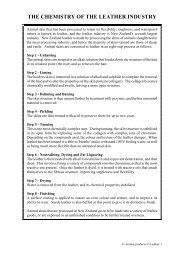Pigment Dispersion perparation
You also want an ePaper? Increase the reach of your titles
YUMPU automatically turns print PDFs into web optimized ePapers that Google loves.
12/1/2016 Steric stabilization<br />
(/en/)<br />
Wetting and Dispersing Additives<br />
Welcome to the interactive world of BYK additives. This multimedia “wetting and<br />
dispersing additives” brochure has been designed to support your work, offering<br />
interactive graphics fascinating animations and videos to show the chemical<br />
processes.<br />
01<br />
Why do we use wetting and dispersing<br />
additives?<br />
http://ebooks.byk.com/en/wettinganddispersing/stericstabilization/ 1/20
12/1/2016 Steric stabilization<br />
One of the most important steps in the production of pigmented coatings is the<br />
homogeneous distribution of solid pigments within the liquid binder solution. If this<br />
pigment grinding step is not optimized, a wide variety of defects can occur:<br />
Flocculation (/en/wetting-and-dispersing/deflocculating-wetting-and-dispersingadditives/)<br />
Gloss reduction<br />
Color shift<br />
Separation, (/en/wetting-and-dispersing/prevention-of-floating/)<br />
formation of Bénard cells (/en/wetting-and-dispersing/prevention-of-floating/)<br />
Settling.<br />
Properties related to the flow characteristics of the coating system, such as<br />
Sagging<br />
Leveling<br />
can also be negatively affected.<br />
http://ebooks.byk.com/en/wettinganddispersing/stericstabilization/ 2/20
12/1/2016 Steric stabilization<br />
Possible paint defects...<br />
Phthalocyanine blue and titanium dioxide; formation of Bénard cells<br />
02<br />
<strong>Pigment</strong> dispersion<br />
http://ebooks.byk.com/en/wettinganddispersing/stericstabilization/ 3/20
12/1/2016 Steric stabilization<br />
<strong>Pigment</strong>s are usually incorporated in the coating in the form of dry pigment powders. The pigments are not primary<br />
particles, they are agglomerates. Agglomerates represent pigment “groupings” in which the spaces between the<br />
individual pigment particles contain air and moisture. These individual pigment particles are in contact with one<br />
another only along their edges and corners. Interactive forces between the particles are relatively small so that such<br />
forces can be overcome by traditional dispersing units. In the case of pigment dispersion, the pigment agglomerates<br />
are broken up by impact and shearing forces, which ideally lead to primary particles.<br />
During this process, energy is supplied to the coating system and therefore smaller particles are formed, with a larger<br />
interface to the resin solution. The system then endeavors to escape this energy-rich state in order to revert to its<br />
previous low-energy state: the finely distributed pigments come back together to form larger structures which are then<br />
known as flocculates. This is expressed, for example, by the reduced color strength, decreased gloss, and altered<br />
rheology. In terms of structure, the flocculates are very similar to the agglomerates; nevertheless, the interstitial<br />
spaces between the pigments are now filled with a binder solution rather than air.<br />
<strong>Pigment</strong> dispersion and flocculation<br />
0:16 / 0:16<br />
http://ebooks.byk.com/en/wettinganddispersing/stericstabilization/ 4/20
12/1/2016 Steric stabilization<br />
Flocculation/deflocculation: two droplets of paint (organic red<br />
pigment) under the microscope<br />
Flocculation/deflocculation: two dispersions of a fine-particle carbon<br />
black pigment in transmitted light<br />
http://ebooks.byk.com/en/wettinganddispersing/stericstabilization/ 5/20
12/1/2016 Steric stabilization<br />
03<br />
The dispersion process<br />
The various processes which occur during pigment dispersion can be divided into the following three steps:<br />
During Step 1, all of the air and moisture at the pigment surface is displaced and then replaced by the binder solution.<br />
The binder solution wets the pigment particles and the solid/gaseous interface (pigment/air) is transformed into a<br />
solid/liquid interface (pigment/binder solution). To do this, the binder solution must penetrate into the interstitial<br />
spaces of the agglomerate.<br />
http://ebooks.byk.com/en/wettinganddispersing/stericstabilization/ 6/20
12/1/2016 Steric stabilization<br />
Step 2 represents the actual dispersing of the pigment. Through mechanical energy (impact and shear forces), the<br />
pigment agglomerates are broken up and accordingly reduced to their particle size.<br />
In the concluding Step 3, the pigment dispersion must be stabilized in order to prevent the formation of<br />
uncontrolled flocculation. As described later in more detail, suitable measures are used to keep the individual pigment<br />
particles at appropriate distances from one another so that they cannot congregate. In most applications the<br />
stabilization of the deflocculated state is desirable; in some applications the pigment dispersion can also, however, be<br />
stabilized by controlled flocculation (which will be discussed later).<br />
Steps 1 (wetting) and 3 (stabilizing) can be optimized by additives. Wetting additives accelerate the wetting of the<br />
pigment agglomerates using the binder. <strong>Dispersion</strong> additives improve the stabilization of the pigment dispersion.<br />
One and the same product can often function as both the wetting and the dispersing additive.<br />
Additives will not help in step 2, the actual dispersion of the pigment agglomerates, even if the term “dispersion”<br />
additive would suggest the contrary. Here it is important that the mechanical forces are great enough to break up the<br />
agglomerates and that the dwell time of the agglomerates in the sphere of action of these forces is of sufficient<br />
length. If the agglomerates are broken up as much as possible, the dispersing additives can then stabilize this state<br />
and effectively suppress flocculation.<br />
0:21 / 0:21<br />
http://ebooks.byk.com/en/wettinganddispersing/stericstabilization/ 7/20
12/1/2016 Steric stabilization<br />
04<br />
Wetting additives<br />
The wetting of the pigment agglomerates through the binder<br />
solution is influenced by many factors. The penetration speed of<br />
the liquid phase into the interstices of the agglomerates is – under<br />
considerably simplified conditions – mathematically expressed by<br />
the Washburn equation.<br />
http://ebooks.byk.com/en/wettinganddispersing/stericstabilization/ 8/20
12/1/2016 Steric stabilization<br />
The capillaries between the pigment particles are assumed to be cylindrical tubes with radius r. The first factor on the<br />
right hand side of the equation shows that for fast wetting (high penetration speed) loosely packed agglomerates (r is<br />
large) and a low viscosity are favorable. However, the agglomerate structure cannot be influenced by the coating<br />
producer and the possibilities for viscosity reduction are fairly limited.<br />
The second factor looks more promising: here we have the surface tension of the penetrating liquid and the contact<br />
angle. Both can be influenced by wetting additives but they are not independent from each other: it is not possible<br />
to have a high surface tension together with a low contact angle. In practice, wetting additives are used to lower the<br />
surface tension as far as necessary to bring the contact angle close to zero; lower surface tension values should be<br />
avoided.<br />
Wetting additives can be defined as substances which are designed to reduce the contact angle between the pigment<br />
and binder solution and which, as a result, accelerate the penetration speed of the liquid into the agglomerate<br />
structure. Characteristic for such substances is their surfactant structure: polar, hydrophilic structural elements along<br />
with nonpolar, hydrophobic structural elements are combined in one molecule. Because of this very structure, such<br />
compounds are interface-active, i.e. the wetting additives migrate to the pigment/binder solution interface. From a<br />
chemical perspective, wetting additives can be classified as either ionic or non-ionic – according to how the polar<br />
segment is incorporated into the molecule. The non-polar segment is, as a rule, represented by hydrocarbon chains.<br />
<strong>Pigment</strong> wetting<br />
0:39 / 0:39<br />
http://ebooks.byk.com/en/wettinganddispersing/stericstabilization/ 9/20
12/1/2016 Steric stabilization<br />
05<br />
Dispersing additives<br />
Dispersing additives are needed to stabilize the state achieved<br />
after the pigment grinding (fine distribution of the pigment<br />
particles in the binder solution) for a long period of time, i.e. to<br />
prevent the flocculation of the pigments.<br />
Flocculation is caused by the attractive London-van der Waal forces occurring between the particles. These forces<br />
are effective only across a small distance, but the Brownian molecular motion causes the particles to collide time<br />
and again or at least causes them to become too close to each other and therefore creates flocculation.<br />
In order to stabilize a system against flocculation, repelling forces must be used between the particles. The<br />
interaction of the attracting and repelling energies between the particles is usually represented in the form of<br />
potential curves. The total of both curves results in the total energy.<br />
http://ebooks.byk.com/en/wettinganddispersing/stericstabilization/ 10/20
12/1/2016 Steric stabilization<br />
Potential curves: Repelling energy (V ab), attracting energy (V an) and the total (V ges) as a function of the particle<br />
distance. The maximum in the curve of the total energy (V max) represents an energy barrier that prevents<br />
flocculation. Only particles with a greater thermal energy can conquer the barriers and flocculate.<br />
Dispersing additives adsorb on the pigment surface and bring about considerable repelling forces between the<br />
pigment particles. This keeps the particles at a distance and reduces the tendency towards uncontrolled flocculation. In<br />
practice, this takes place by means of electrostatic repulsion and/or steric stabilization. Both stabilization measures<br />
are described below.<br />
Deflocculation generates rather Newtonian flow characteristics along with generally reduced viscosity. This, in turn,<br />
improves leveling behavior and enables higher pigment loading.<br />
Due to the small particle size of the deflocculated pigments, high gloss is obtained and color strength is increased.<br />
Likewise, transparency or opacity is increased, dependent upon whether the respective pigment was designed by the<br />
manufacturer to be transparent or opaque. Deflocculation leads in general to an improved, more efficient pigment<br />
http://ebooks.byk.com/en/wettinganddispersing/stericstabilization/ 11/20
12/1/2016 Steric stabilization<br />
utilization, which (especially in the case of the sometimes rather expensive organic pigments) is of economic<br />
significance.<br />
The flocculation level also has an influence on the color of a pigment: if, for example, a system tends to flocculate<br />
upon storage, then color change can result. In situations where this is especially critical (such as in the base component<br />
of a mixing system or with very high-quality coating systems), the only way to produce coatings with a constant and<br />
defined color is through complete deflocculation. Generally speaking, a good deflocculation of all pigments is<br />
extremely beneficial and desirable for all pigmented topcoat systems.<br />
06<br />
Electrostatic stabilization<br />
http://ebooks.byk.com/en/wettinganddispersing/stericstabilization/ 12/20
12/1/2016 Steric stabilization<br />
The dissociated ionic structures in the solid surface and selective<br />
ion adsorption cause dispersed solid particles in a liquid phase to<br />
carry electric charge. As the entire system is electrically neutral,<br />
the appropriate number of counter ions must be present in the<br />
adjacent liquid. We talk about an electrical double layer, which is<br />
made up of an adsorptive bound layer and a diffuse layer, in<br />
accordance with Stern’s model.<br />
When two particles get close to one another, the double layers influence each other; in the case of opposite electrical<br />
charge they are attracted to each other, and with like charges they repel each other. The interaction between these<br />
electrostatic forces and the attracting London-van der Waal forces are described by the DLVO theory.<br />
Additives can significantly influence the surface charge of the pigment particle: a targeted generation of strong<br />
charges brings about a high repulsion potential and thereby suppresses flocculation. Polyelectrolytes are<br />
particularly suitable as dispersing additives which function in this manner. Their polymer structure enables them to be<br />
readily and sustainably adsorbed on the pigment surface, and their multitude of ionic groups brings about<br />
considerable surface charges.<br />
This type of stabilization is basically restricted to aqueous systems, as only here (on account of the high dielectric<br />
constant of the water) can sufficiently strong charges be produced. In principle, this mechanism also functions in<br />
organic solvents, however the surface charges are much lower, i.e. the thickness of the electrical double layer is<br />
considerably reduced and not usually sufficient to effectively prevent flocculation in the majority of cases.<br />
Alongside the dielectric constant, the ion concentration and, above all, the valency of the ions have a strong influence<br />
on the electrical double layer. High ion concentrations and multivalent ions (even at a low concentration) can<br />
significantly worsen the stabilization and even cause it to completely fail.<br />
Electrical double layer around a negatively charged particle<br />
http://ebooks.byk.com/en/wettinganddispersing/stericstabilization/ 13/20
12/1/2016 Steric stabilization<br />
Adsorptive bound layer (Stern layer) and diffuse layer<br />
Sodium polyacrylate as a typical polyelectrolyte<br />
(/en/wetting-and-dispersing/why-do-we-use-wetting-and-dispersing-additives/#)<br />
http://ebooks.byk.com/en/wettinganddispersing/stericstabilization/ 14/20
12/1/2016 Steric stabilization<br />
The standard dispersing additives used in the coatings industry which use electrostatic effects are polyphosphates and<br />
polyacrylates as a potassium, sodium or ammonium salt.<br />
Alongside the influence on the charge, in some cases (dependent upon the polymer structure) a contribution towards<br />
stabilization by means of steric effects can be observed. The structure of the polyacrylates is similar to that of binders,<br />
therefore influencing the dried films less than the polyphosphates would. The phosphates have the advantage that<br />
they are also ideal for chelating multivalent ions (e.g. calcium) in the system and thereby eliminating the negative<br />
influence of these ions on the stabilization mechanism.<br />
Dispersing additives of this type have been used successfully in aqueous emulsion paints for decades and continue to<br />
be used successfully today.<br />
Polyelectrolyte-based dispersing additives for aqueous systems are pure dispersing additives and feature virtually no<br />
pigment wetting properties. Therefore, if the pigment wetting is also to be improved, they must be combined with the<br />
appropriate wetting additives.<br />
(/en/wetting-and-dispersing/why-do-we-use-wetting-and-dispersing-additives/#)<br />
Instead of using electrical charge, a repulsion potential can also be developed between dispersed particles by means of<br />
the adsorbed polymer coatings on the surface. Each particle is surrounded by an envelope of solvated polymer<br />
molecules and, when approaching, two particles overlap and penetrate these polymer envelopes.<br />
http://ebooks.byk.com/en/wettinganddispersing/stericstabilization/ 15/20
12/1/2016 Steric stabilization<br />
This increases the polymer concentration in the overlapping area and the osmotic pressure causes the solvent to be<br />
transported to this area so that the particles are repelled away from each other again. In addition, in the overlapping<br />
area the polymer molecules are restricted in their conformation, which signifies a reduction in the entropy and<br />
therefore represents a repulsion potential. Depending on the system, an enthalpic as well as an entropic contribution<br />
can be made towards stabilization.<br />
(/en/wetting-and-dispersing/why-do-we-use-wetting-and-dispersing-additives/#)<br />
Suitable additives generally have two typical structural features: firstly, such products contain one or more so-called<br />
“pigment-affinic” groups – anchor groups or adhesive groups – that all together provide a strong, durable<br />
adsorption onto the pigment surface. Secondly, such products contain binder-compatible chains which, after<br />
adsorption of the additive onto the pigment surface, protrude as far as possible from the pigment into the<br />
surrounding binder solution.<br />
http://ebooks.byk.com/en/wettinganddispersing/stericstabilization/ 16/20
12/1/2016 Steric stabilization<br />
This layer of adsorbed additive molecules with the protruding polymer chains brings about the stabilization effect<br />
described above and therefore the deflocculation of the pigments. The effect is further intensified by the fact that the<br />
polymers of the coating binder interact with the polymer segments of the additive and can strengthen the adsorption<br />
layer.<br />
<strong>Pigment</strong>s with adsorbed additive molecules.<br />
When the pigment particles approach each other, the polymer segments penetrate and this causes steric<br />
stabilization.<br />
(/en/wetting-and-dispersing/why-do-we-use-wetting-and-dispersing-additives/#)<br />
Through specific structural elements composed of pigment-affinic groups (polar) and binder-compatible chains (less<br />
polar), these additives exhibit definitive surfactant properties. In other words, they not only stabilize the pigment<br />
dispersion by means of steric hindrance, but they also function as wetting additives. It is therefore not necessary to<br />
add a dose of special wetting additives when using these wetting and dispersing additives.<br />
http://ebooks.byk.com/en/wettinganddispersing/stericstabilization/ 17/20
12/1/2016 Steric stabilization<br />
To ensure an effective stabilization, the additive envelope around the pigment particles should be as thick as possible –<br />
a thickness in excess of around 10 nm is generally considered sufficient. This means that the polymer segments of the<br />
additive must be as highly solvated as possible, i.e. they must have a good compatibility with the surrounding binder<br />
solution. If there is a poor compatibility, the polymer segments will fold together and then will not lie closely on the<br />
pigment surface: the stabilization against flocculation is then marginal. When selecting an additive for a specific<br />
system it is necessary to consider the compatibility between the additive and the binder.<br />
The mechanism of steric stabilization can be applied both to aqueous as well as non-aqueous systems; of course, the<br />
additives must have the appropriate compatibility. While the electrostatic stabilization functions virtually only in<br />
aqueous systems, this restriction does not apply to steric stabilization.<br />
(http://www.altana.com/)<br />
www.byk.com<br />
(http://www.byk.com) Imprint<br />
(http://www.byk.com/en/imprint.html)<br />
(/en/wetting-and-dispersing/why-do-we-use-wetting-and-dispersing-additives/#)<br />
http://ebooks.byk.com/en/wettinganddispersing/stericstabilization/ 18/20
12/1/2016 Steric stabilization<br />
(/en/wetting-and-dispersing/why-do-we-use-wetting-and-dispersing-additives/#)<br />
http://ebooks.byk.com/en/wettinganddispersing/stericstabilization/ 19/20
12/1/2016 Steric stabilization<br />
(/en/wetting-and-dispersing/why-do-we-use-wetting-and-dispersing-additives/#)<br />
http://ebooks.byk.com/en/wettinganddispersing/stericstabilization/ 20/20


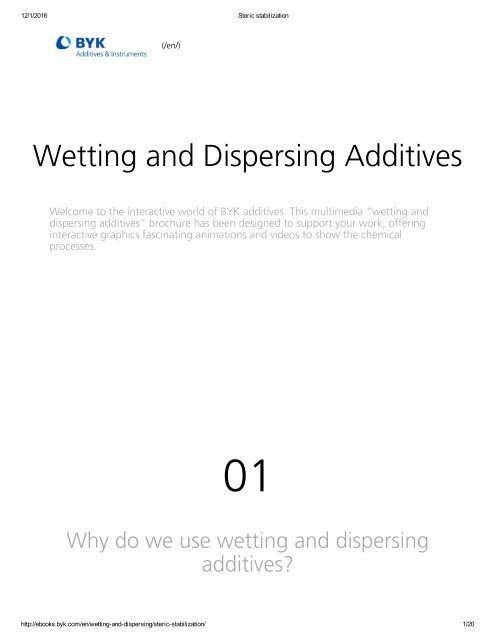



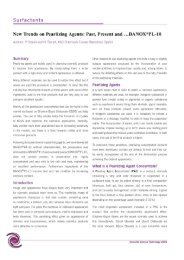

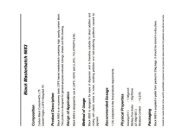

![[Ulwick_A.W.]_Business_Strategy_Formulation_Theor(BookZZ.org)](https://img.yumpu.com/56355932/1/190x240/ulwick-aw-business-strategy-formulation-theorbookzzorg.jpg?quality=85)

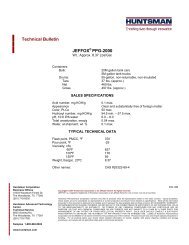

![Desmond Morris - 2002 - Peoplewatching - The Desmond Morris Guide to Body Language (poor quality-double page)(290p) [Inua]](https://img.yumpu.com/54998318/1/189x260/desmond-morris-2002-peoplewatching-the-desmond-morris-guide-to-body-language-poor-quality-double-page290p-inua.jpg?quality=85)
